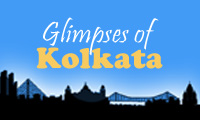The Babus of Calcutta
19th Century – Emergence of the Bengali Elite Class – “The Babus of Calcutta” and the first wave of Nationalism.
The babus were the high-class, rich Bengali people during the late 18th and 19th century, who came into being as a result of intimate interaction with the British in Kolkata.
Raja Nabakrishna Deb of Shobhabazar Rajbari was the earliest known ‘Babus’ of Calcutta. An erudite intellectual well versed in Persian and Urdu, he served as a close confidante to Lord Clive. With his help, Clive won many allies and thus established British sovereignship in Bengal. The first Durga puja was celebrated by the Raja in his palace at north Calcutta after the win of the British at the Battle of Plasey. The celebration was a grand reverie graced by the presence of many Englishmen and Bengali aristocracy. Thus, started the trend of Durga Puja extravaganza by various elite or Babus of Calcutta. Among the eminent aristocrat families of Kolkata the most well known were the Tagore’s of Jorashanko, the Mullicks and the Deb’s of Shovabazar.
In spite of these developments, there was a subtle tone of racist disparity arising. With the passing of time, the gap became wider and uglier. The confluence proved to be a costly affair. The allies turned into imperialists and ruling became the ruled in their own native land. As Girish Chandra Ghosh, one of the earliest nationalists pointed out: ‘How,’ asked Ghosh, ‘is he who has appreciated the genius of Shakespeare and Bacon…who has read and discussed so much about the equality of man to bear the insolence of the civil servant or of the low-born English merchant whom he is obliged to call his master?’
The Uprising of 1857 at Barrackpore was the first step towards nationalism against the British rule. This was the turning point in the history of India’s struggle for independence. The incident triggered a mass wave of courage and spirit amongst the countrymen. Shortly after, in 1861 the Blue Mutiny took place in Bengal. The movement was led by the peasants of Bengal against forced growing of indigenous indigo plants. Dinabandhu Mitra facilitated the course of the movement through Nil Darpan, his regional publication. Gradually following suit, Bankim Chandra Chatterjee, started India’s First nationalist magazine, Bangadarshan. These events led to the formation of the Indian Association in 1876 which gradually led to the establishment of the country’s first nationalist organization ‘The Indian National Congress’ at Bombay in 1885.

